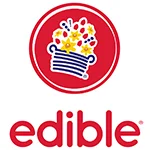 |
| Matt Caiola |
Consumers are increasingly seeking convenient purchasing options, which explains the popularity of Buy Now Pay Later (BNPL). This payment method allows customers to make immediate purchases while deferring payment, usually in installments.
While BNPL has existed for years, it recently exploded in popularity during the pandemic, fueled by the rise in online shopping. Specifically, the total value of BNPL loans grew by more than 1000 percent from just 2019 to 2021, indicating that this was a trend that could outlast COVID-19. It’s clear now that BNPL is transforming retail, e-commerce, and how consumers shop in general.
How Does BNPL Work?
The concept of BNPL is simple: it’s a type of short-term financing that divides your purchase into multiple equal payments, with the first payment due at checkout. One of the most common BNPL plans is a 4-installment payment plan, with purchases typically ranging from $50 to $1000.
When using BNPL, customers usually need to create an account with a BNPL provider or use their existing account. Once customers select the desired items and add them to their cart, they can choose the BNPL option during checkout. Depending on the provider, the BNPL provider may require a small initial payment or no upfront payment.
After completing the purchase, customers are obligated to pay back the full amount in installments over a predetermined period. The BNPL provider determines the repayment schedule, which can vary depending on the total purchase amount, repayment duration and payment frequency.
Why Is BNPL So Popular?
One of the most significant advantages of BNPL is its ability to give consumers greater control over their spending. While credit cards can often be predatory, younger consumers view BNPL as a more transparent and flexible way to purchase products that would otherwise be beyond their reach.
Consumers split their purchases into interest-free installments, empowering them to manage their finances better while avoiding the burden of paying for the purchase upfront. Rather than paying for a purchase upfront, consumers can spread the cost over several weeks, making it more manageable and less likely to result in debt.
This has resonated most with Gen Z and millennials. While previous generations racked up credit card debt, it’s clear that BNPL is appealing to young people as a smarter way to purchase aspirational items on more reasonable terms. Since most BNPL providers do not charge interest (assuming payments are made on time), younger buyers can avoid the high costs associated with traditional credit cards.
The Current BNPL Landscape
How popular is BNPL? According to Juniper Research, there are an estimated 360 million global BNPL users. In terms of future growth, that number is expected to rise by 157 percent to 900 million BNPL global users by 2027. Some major players in the BNPL sector include companies like Klarna, Afterpay and Affirm.
5WPR’s 2023 Consumer Culture Report unveiled some interesting statistics, including that 11 percent of consumers who shop with the BNPL feature suggest that it impacts how they spend by “a lot.” This is particularly fascinating, as it indicates that consumers view price as less of a barrier, and BNPL as more of a value-add to the purchasing process. This would also explain why more brick-and-mortar and retail businesses offer BNPL options.
The report also pointed out that most (60 percent) of consumers use the feature while shopping and 80 percent of BNPL shoppers are between 25 and 34. The most common BNPL purchases include clothing and fashion, suggesting that businesses in this sector should consider partnering with BNPL providers to remain competitive.
New BNPL Players Emerging
With this explosive popularity, it’s no surprise that new competition is emerging. Major credit card companies like American Express, Citibank and Chase have begun offering BNPL loan options. There’s also new competition coming in from Silicon Valley, with Apple Pay Later recently being launched.
The technology giant announced that users could apply for loans between $50 and $1000, which will exist within the Apple Wallet. While the program has not been officially rolled out nationwide, the company claims “randomly selected users” will receive invites.
We live in a world where convenience is king, and BNPL offers the modern consumer more flexibility and buying power. Whether consumers are making purchases online or in-store, it’s clear that the sector will continue to grow significantly over the next decade.
***
Matt Caiola is Co-CEO of 5WPR.
The research was conducted by Censuswide, an independent market research consultancy, with a nationally representative sample of 2,000 US consumers between the November 21 and 24, 2022. Censuswide, which is a member of the British Polling Council, abides by and employs members of the Market Research Society. All survey panelists are double opted-in, in line with the MRS code of conduct and ESOMAR standards.
5W's in-house research & analytics practice leveraged an AI-based natural language processing tool in order to visualize, aggregate and analyze the most salient media conversations surrounding inflation, consumer spending habits and supply chain impacts over the preceding calendar year (November 2021 - November 2022). Insights gleaned from this analysis were paired with Censuswide's consumer survey data to ensure synergies in 5W's reporting.


 Ruder Finn has recruited Ketchum veterans Corrine Gudovic and Tera Miller to bolster its consumer group, which serves Coca-Cola, Disney, LG, and Aveda.
Ruder Finn has recruited Ketchum veterans Corrine Gudovic and Tera Miller to bolster its consumer group, which serves Coca-Cola, Disney, LG, and Aveda. Successful consumer PR campaigns go beyond promotion. They craft a gripping brand narrative, showcasing a product's values, mission, and dedication to social responsibility.
Successful consumer PR campaigns go beyond promotion. They craft a gripping brand narrative, showcasing a product's values, mission, and dedication to social responsibility.
 Coyne PR has scooped up AOR duties for Edible Brands, which offers fresh fruit arrangements, baked goods, flowers and gourmet chocolates at more than 1,000 locations.
Coyne PR has scooped up AOR duties for Edible Brands, which offers fresh fruit arrangements, baked goods, flowers and gourmet chocolates at more than 1,000 locations. Since consumers are prioritizing saving but simultaneously making selective high-priced purchases, marketers need to look at what drives spending and garner insights on how brands can become more “splurge-worthy.”
Since consumers are prioritizing saving but simultaneously making selective high-priced purchases, marketers need to look at what drives spending and garner insights on how brands can become more “splurge-worthy.”


 Have a comment? Send it to
Have a comment? Send it to 
No comments have been submitted for this story yet.